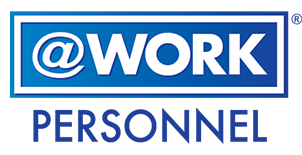| People with an Abundace Mindset... | People with a Scarcity Mindset... |
| Believe there is always more | Believe there is never enough |
| Believe that the "best is yet to come" | Believe it will never be like the "good old days" |
| Believe that "with risk comes reward" | Believe that "we better be careful that seems risky" |
| Share their knowledge and experience believing everyone will benefit | Hold their knowledge and experience believing it gives them an edge |
| Take ownership of change | Fear change |
| Ask "How can we raise revenue?" | Ask "How can we cut costs?" |
| Make a bigger pie | Try to get their fair share |
| Think BIG | Think small |
| Give credit | Take credit |
| Collaborate | Compete |
| Are givers | Are hoarders |
| Are confident | Are fearful |
| Are trusting | Are suspicious |
| Are grateful | Are complainers |
| Are optimistic, possibility thinkers | Are pessimistic, worst-case scenario thinkers |
While you may find yourself identifying with some items on each list, chances are one side or the other more accurately defines your mindset or beliefs about the world. For the next few paragraphs, I want to give you four reasons why you will get better results with a mindset more in line with abundance thinking than scarcity thinking.
Your Customers Have Earned It
Your customers (or clients, patients, students, etc.) have exchanged funds for your services; services that they expect to make their life better in one or more ways. Yes, they have given you money for a product or service, but there are other possible dimensions to this value exchange.
When your customers interact with people exhibiting the abundance mindset behaviors, they are more likely to be happy with that exchange, come back more frequently, and tell others about you, your products and services.
They likely won't be able to describe the reasons in this way, but that doesn't change those facts. And the spreading of those behaviors starts with you.
Your Organization Needs It
Your customers write your (and everyone on your team's) paychecks. So when we do things that positively impact our customers, their interactions with us, and, therefore, their long-term willingness to stay and keeping paying us, we are doing what our organization hired us to do.
I don't care if you are a government agency or a not-for-profit; there is a customer who is writing your paycheck. Your organization needs you to be on the left side of this chart to create stability and long-term viability for the enterprise.
Your Team Members Crave It
Look at the abundance list again. Many of these speak directly to the behaviors and habits people want in a supervisor, coach and manager. It is called effective leadership when people choose to follow. Do people want to follow those who:
- Are willing to share their knowledge and expertise
- Give credit
- Are trusting
- Are grateful
Without a doubt.
But your team members more than just crave or desire these things from you, they need these things to grow, develop and become who they are capable of becoming (and therefore making a bigger positive impact for your organization and customers).
We lead only when people choose to follow. People choose to follow abundance thinkers.
You Deserve It
Here is the bottom line. You will be happier, healthier and get better results with the abundance mindset than the scarcity mindset. This is true for you personally; and for the reasons listed above, you will be more successful as a leader when you adopt or move towards this mindset.
If you started reading this post thinking this is theoretical, or somewhat esoteric, I hope I have changed your mind. I encourage you to reflect not only on what you say you believe, but also on which of these lists of behaviors are what you actually do.
Belief is the start, but it is the actions themselves that will make the difference.
About the Author
Kevin Eikenberry is the Chief Potential Officer of The Kevin Eikenberry Group, a leadership and learning consulting company that has been helping organizations, teams and individuals reach their potential since 1993. Kevins specialties include leadership, teams and teamwork, organizational culture, facilitating change, organizational learning and more.

